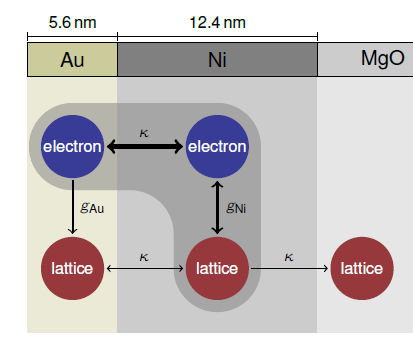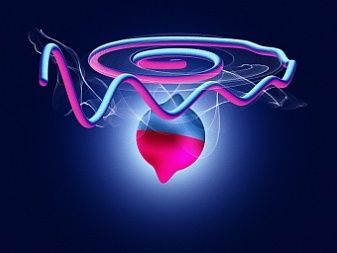Nanoscale heat transport under the microscope
A team of researchers from the Helmholtz-Zentrum Berlin (HZB) and the University of Potsdam has investigated heat transport in a model system comprising nanometre-thin metallic and magnetic layers. Similar systems are candidates for future high-efficiency data storage devices that can be locally heated and rewritten by laser pulses (Heat-Assisted Magnetic Recording). Measurements taken with extremely short X-ray pulses have now shown that the heat is distributed a hundred times slower than expected in the model system.

The heat is distributed in an unusual way in the gold-nickel thin film and about a hundred times slower than expected.
University of Potsdam
Metals usually conduct heat extremely well. Local heating is distributed almost instantaneously through their free electrons. By contrast, insulating materials without free electrons conduct heat much more slowly, depending instead solely on lattice vibrations. A team led by Prof. Matias Bargheer from the University of Potsdam, who heads a Joint Research Group on ultrafast dynamics at the HZB, has now closely examined heat transport in a metallic-magnetic model system.
The model system consists of a nanometre-thin ferromagnetic nickel layer (12.4 nm) applied to a magnesium oxide substrate, with an even thinner layer of gold (5.6 nm) deposited over the nickel. Using an ultra-short laser pulse (50 femtoseconds), the physicists introduced heat locally into the model system, then with extremely short X-ray pulses (200 femtoseconds), determined how the heat was distributed in the two nanolayers over time. The first discovery: The model system does not take the roughly one picosecond to reach thermal equilibrium as expected, but instead a hundred times longer.
The sequence of measurements showed exactly what happens: "Although the laser first hits the layer of gold, the crystal lattice of the gold remains cool. Almost 90 per cent of the energy is transferred to the nickel electrons and introduced at that point into the nickel crystal lattice”, reports Bargheer. Because the electron system in nickel is much more strongly coupled to the nickel crystal lattice vibrations than in the case of gold, the nickel crystal lattice absorbs the heat from the nickel electrons faster and the nickel electrons initially cool. However, since the heat conduction through the now warmer but poorly conducting nickel crystal lattice directly to the cooler gold crystal lattice is very low, the thermal energy finds another pathway from the warmer nickel lattice to the cooler gold lattice. In order to reach thermal equilibrium, thermal energy flows back from the nickel lattice via the nickel electrons to the gold electrons that in turn excite the gold lattice vibrations.
“With this experimental set-up, we have been able to show that it is worthwhile analysing these kinds of transport processes in the temporal domain. We are therefore very pleased that we will soon be able to carry out such experiments at the much more powerful BESSY II X-ray source that will be upgraded to BESSY-VSR and then simultaneously offer very short, yet intense X-ray pulses”, says Bargheer.
Future data memories based on what are referred to as heat-assisted magnetic recording techniques (HAMR) can be locally heated and overwritten with laser pulses. With a deeper understanding of the transport processes, such systems might be able to be developed in such a way that they can manage with minimal input energy.
The experiments took place at the University of Potsdam, the samples were produced by partners at the University of Regensburg, and in addition groups from the Université Lorraine, Nancy, France and the Massachusetts Institute of Technology, Cambridge, USA were involved in the work.

























































